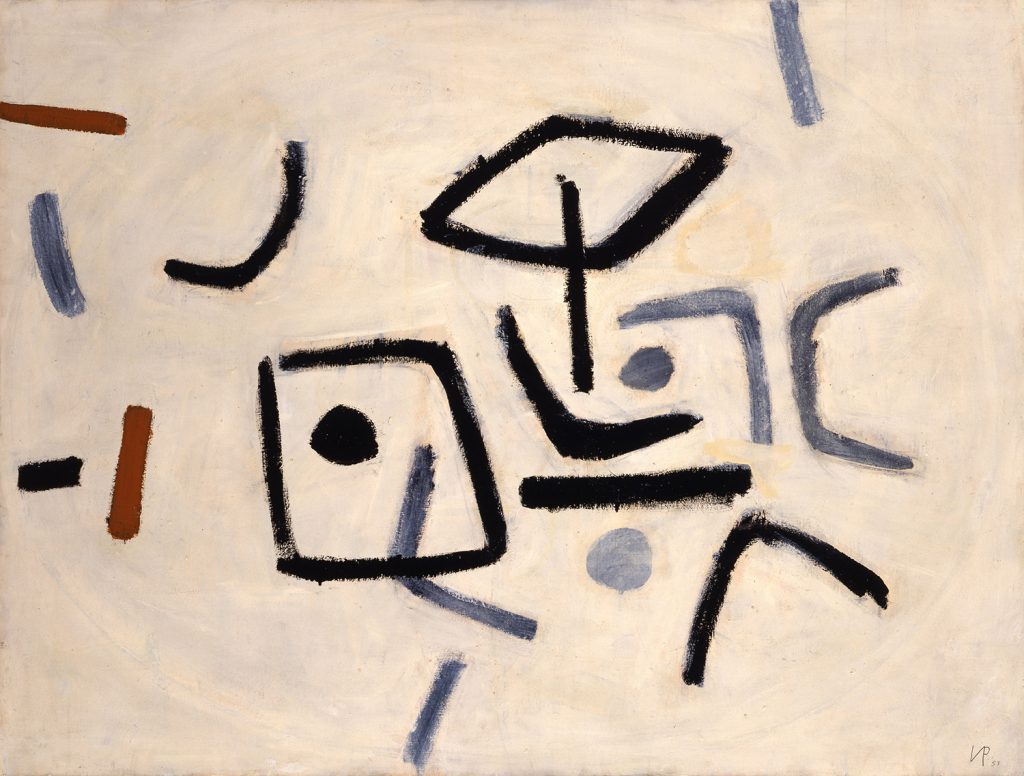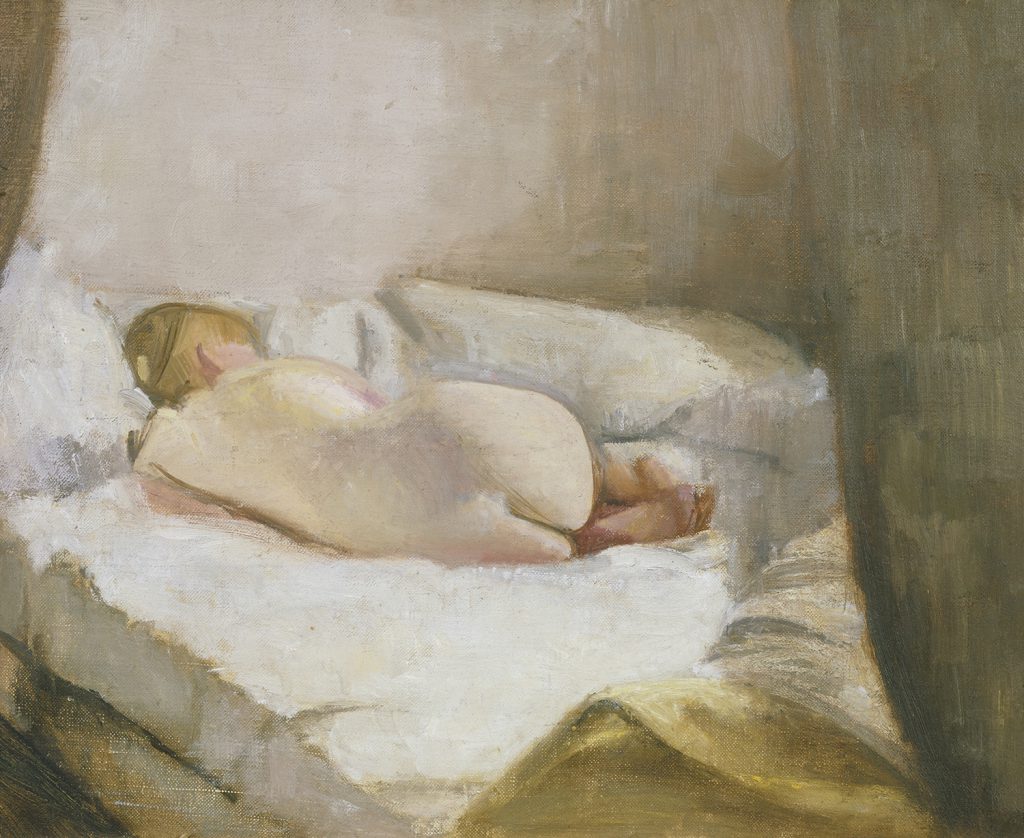
Victor Pasmore: Towards a New Reality, curated by Anne Goodchild, is currently on show at the Pallant House Gallery in Chichester. The exhibition provides a welcome opportunity to reassess the work of this leading British artist.
As you move through the galleries the story of Victor Pasmore’s questioning artistic journey which took him from the figurative to abstraction through a constant experimentalism is told with great assurance. There are works of exceptional beauty from each phase of Pasmore’s oeuvre which never lose touch with the artist’s fundamental desire to depict a new reality of the world he inhabited.

Victor Pasmore was largely self-taught attending evening classes at the Central School of Arts whilst working for the London City Council. He was influenced by the work of the Post-Impressionists and quickly became an assured painter of figures, landscapes and still-life studies. His friendship with the artists William Coldstream and Claude Rogers led to his joining the London Artist’s Association and the London Group in 1934. In 1937 Pasmore, together with Coldstream and Rogers, founded the Euston Road School. The school centred on observation and life drawing. Victor Pasmore would describe his time working at the Euston School as a period as much about learning as teaching. Kenneth Clarke’s patronage enabled Pasmore to devote all his time to his art and teaching. The subtle nude from 1942 is a fine example of Pasmore’s assured interpretation of the Post-Impressionist style. There is delicacy and restraint in his handling of light and paint in the depiction of the girl reclining on a bed. The Euston School closed as the Second World War broke upon Europe.
Moving towards abstraction Pasmore would later describe the effect Paul Klee’s cubist painting, Castle in the Sun, had on him: ‘At an exhibition in London I discovered a painting by Paul Klee made up only of coloured squares. I decided straight away that this was the objective point from which I could start again.’

Pasmore’s collages were made in preparation for paintings. Triangular Motif from 1949 is a collage employing oil paint and paper. The triangles work in concert with the circles. This constructed approach creates movement through the intersections in the layered composition.
Victor Pasmore’s abstracts would show a concern for spatial exploration with directed movement which were linked in the artist’s imagination to journeys through landscapes and built environments. His painting ‘Abstract in Black, White and Ochre, painted in 1948, displays these themes and the influence of Paul Klee. The roughly painted lines once again lends movement to the composition which combines enclosed and open spaces, curves and spots to draw the viewer’s attention.
Victor Passmore: Towards a New Reality runs at The Pallant House Gallery, Chichester until the 11th June 2017. This visually beautiful exhibition is a must. Pallant House Gallery are providing a fine start to the artistic year in Sussex with their spring exhibitions and you should include a visit as one of your Easter treats.
For more information on current exhibitions, events and opening times go to www.pallant.org.uk or telephone 01243 774557.
By Rupert Toovey, a senior director of Toovey’s, the leading fine art auction house in West Sussex, based on the A24 at Washington. Originally published in the West Sussex Gazette.